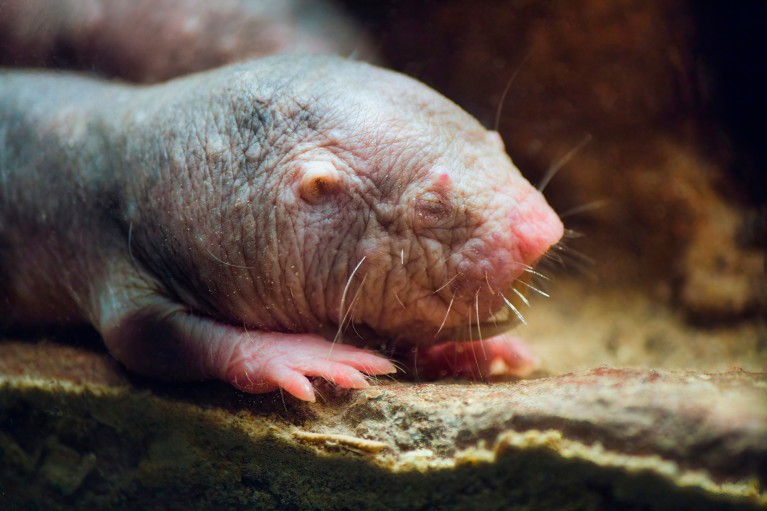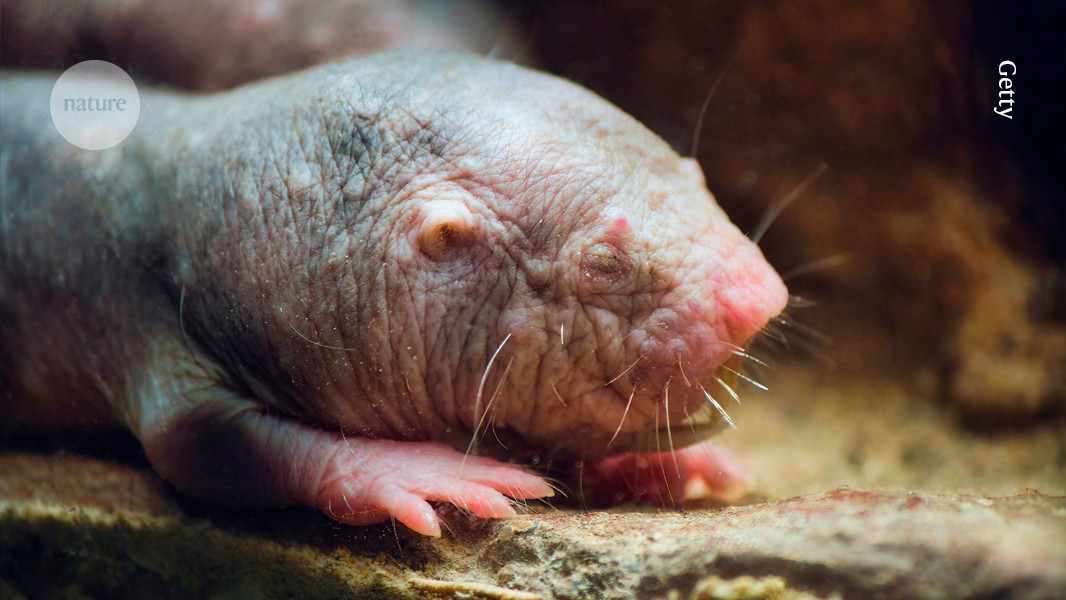
Naked mole rats (Heterocephalus glaber) can live for around 30 years. Credit: Getty
Four subtle tweaks to an enzyme could help explain why naked mole rats’ can live for nearly 30 years, an unusually long lifespan for a creature its size.
The naked mole rat (Heterocephalus glaber), native to the Horn of Africa and parts of Kenya, has drawn attention from researchers because its genetic make-up is closer to humans than it is to mice, making the burrowing rodent an ideal model for studying ageing and longevity.
In a study1, published in Science today, researchers in China show that changes to the enzyme cGAS (cyclic guanosine monophosphate–adenosine monophosphate synthase) enhance the animal’s ability to repair genetic damage that leads to ageing. In humans and mice, the enzyme can suppress DNA repair.
Drivers of ageing
An accumulation of genetic mutations and DNA damage during cell division is a significant driver of ageing and age-related diseases. A process called homologous recombination (HR) is a crucial DNA-repair pathway, and defects in this process are linked to premature ageing and cancer.
During the HR process in humans and mice, cGAS enzyme gets pulled away from the damaged DNA by another protein, disrupting the repair.
Zhiyong Mao, co-author of the study and a molecular biologist at Tongji University in Shanghai, China, and his colleagues wanted to investigate whether a similar process occurs in naked mole rats. They found that four specific amino acid substitutions in the enzyme prevent it from breaking down too quickly after DNA damage. The persistence of cGAS means that the enzyme can connect more effectively with other DNA repair proteins that help to boost the cell’s ability to fix broken DNA.
Enzyme removal
When cGAS was removed from the animal’s cells using the gene-editing tool CRISPR–Cas9, DNA damage accumulated. The team also showed that fruit flies (Drosophila) that were engineered to express human cGAS containing the four mutations, which are specific to the naked mole rat, lived longer than flies expressing the human version of the enzyme.


